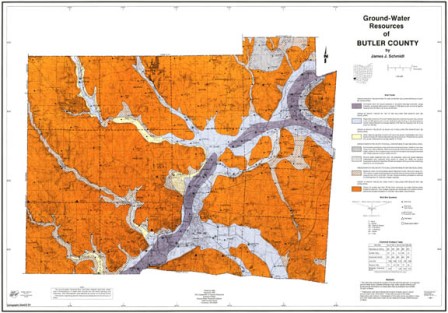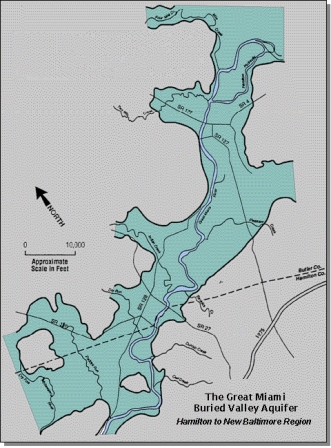| Butler Water Resouces are Attractive to Business |
| Monday, April 21, 2008 10:56:20 AM - Middletown Ohio |

by Shawnda Combs
Fresh water is the single most important resource in the world. In Butler County Ohio, the Great Miami River Buried Valley Aquifer System (GMR-BVAS) provides fresh water in great abundance. It is one of the largest and most productive aquifer systems in the country.
The Great Miami River Buried Valley Aquifer System is one of the most productive sources of potable water in the Midwest and richest water sources in the county with yields to wells in the GMR-BVAS as high as 3,000 gal/min.
San Diego-based Amylin Pharmaceuticals chose Butler Countyís West Chester Township for its $400 million biopharmaceutical manufacturing plant in 2007 because of the GMR-BVASís abundant water supply.
GMR-BVAS and Butler Countyís abundant water supply is one of the key reasons Miller Brewing built its largest U.S. brewery in Butler County.
Groundwater in the GMR-BVAS has been a water source since the early 19th century and domestic and industrial growth in the Great Miami River Valley can be directly attributed to plentiful groundwater resources.
GMR-BVAS alone provides up to 200 million gallons a day for residents of nine counties, including Butler, Warren, Hamilton and Montgomery.
GMR-BVAS was recognized as a Sole-Source Aquifer by the U.S. Environmental Protection Agency in 2004.
The GMR-BVAS is 2 miles in width and 150 ft. to 200 ft. in depth and was formed during interglacial episodes of the Pleistocene Epoch and was subsequently filled with sand and gravel outwash.
There are 2,360 miles of rivers and streams in the Great Miami River Watershed.
While water shortages in parts of the U.S. make water rationing and watering bans an inconvenience to homeowners, water emergencies can be a disaster for businesses that use large quantities of water in their daily manufacturing and production operations.
Areas and communities with persistent and severe drought conditions or low water levels must limit water usage and sometimes enforce severe water restrictions. Shrinking water supplies in many parts of the country have made water emergencies a common occurrence rather than an exception to the norm. And, the lack of water in the Southeast and West are not a seasonal anomaly but rather an every day fact of life. Butler County, where water is plentiful, does not have these problems.
In 1995, an estimated 745 million gallons per day was withdrawn from streams and aquifers in the Great and Little Miami River Basins. Of this, approximately 48 percent was withdrawn from surface-water bodies while the remaining 52 percent was derived from ground-water sources. Excluding withdrawals from the Ohio River, almost 92 percent of the water used for public, domestic, commercial, and industrial supply was derived from ground-water sources. Most of this ground water is pumped from the Great Miami River Buried Valley Aquifer System which underlies stream valleys associated with the Great and Little Miami Rivers.

Although rivers in the Great and Little Miami River Basins greatly influenced the early development of the region's economy, it has been the availability of abundant ground-water supplies that has spurred rapid growth and development in the region since the beginning of 20th century. Another important factor affecting growth and development is the relatively unspoiled nature of the streams and rivers. The Little Miami River (a State and National Scenic River), the upper Great Miami River and its tributaries, and the Whitewater River in Indiana largely contain high-quality warm water habitats with biologically diverse fish and wildlife populations.
|
| |
|

